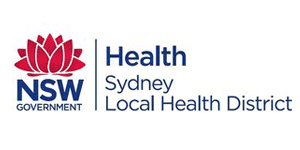The Woolcock Institute of Medical Research

Smoke on the horizon
The recent hazard reduction burning around Sydney could be a precursor to what is expected to be a difficult bushfire season. The Woolcock’s Dr Christine Cowie has some sound advice on how to breathe more easily this summer.
Sydney’s air quality deteriorated considerably in mid-September as a thick layer of smoke haze and the smell of backburning filled the city. Children at schools in Sydney’s south were kept indoors and those with pre-existing respiratory and heart conditions were warned they were at heightened risk of exacerbations due to smoke exposure.
“There is often an increase in people presenting and being admitted to hospital during bushfire smoke episodes, mainly for respiratory disease like asthma,” Dr Cowie told the ABC.
Dr Cowie’s research focuses on the health effects associated with air pollution, including bushfire and woodsmoke exposures.
Her advice to those with pre-existing respiratory and heart issues or serious chronic disease, in the short term, is to opt to stay indoors as much as possible on days where the air quality is rated poor. Keep doors and windows closed and, if possible, turn air conditioning to “air recycling” mode. If you have an air cleaner, she advises to use it. Air cleaners with HEPA filters are able to reduce particulate matter inside the home. While there are fewer studies of the usefulness of air conditioning in reducing indoor air pollution, at this stage, householders are advised to use A/C on a recycling mode. If you’re driving, keep the car’s windows close and the air conditioning on recycle too.
"People need to listen to their doctor’s advice and continue to properly take medication. Short-term relief for those without air conditioning can be found in local shopping centres or other public air- conditioned spaces, but of course, this is a short-term solution,” she says.
Want to stay up to date with our work on asthma, hay fever, COPD and other respiratory conditions? Sign up to our monthly newsletter
Over the longer term, Dr Cowie says there is a concern for everyone from exposure to fine particulate matter in the air during backburning and bushfires.
“When our bushland burns it produces a number of different pollutants but from a health perspective, the most studied is particulate matter. Fine particulate matter – less than 2.5 microns in diameter or one thirtieth of a strand of hair – mixes with larger particulates and that forms a visible haze. Our concern is the tiny particles that are small enough to be breathed deeply down into our lungs."
Those particles not only full penetrate the respiratory system, but they are small enough to be absorbed into the blood stream which can cause further damage to other organs in our body.
While there is research on the short-term effects of exposure to bushfire smoke – as well as clear evidence of increased hospital admissions for respiratory symptoms and a rise in the sale of asthma and respiratory medication – there have been relatively few studies completed on the long-term effects of prolonged periods of exposure to bushfire smoke.
Staying inside, as recommended, will only protect you so much depending on what your type of housing is like – whether the house is leaky and allows outdoor air to enter or if there’s air conditioning or an air cleaner being used.
“The current evidence indicates there is no safe lower level of exposure to particulate matter pollution,’ says Dr Cowie. “And so it is important that we limit our exposure to it, whether that be on a daily basis with urban air pollution or during these bushfire episodes.”
- Bushfire smoke affects young, healthy people too, a report on the research in the Medical Republic, 12 August 2021
- About Respiratory Services at the Woolcock Clinic










